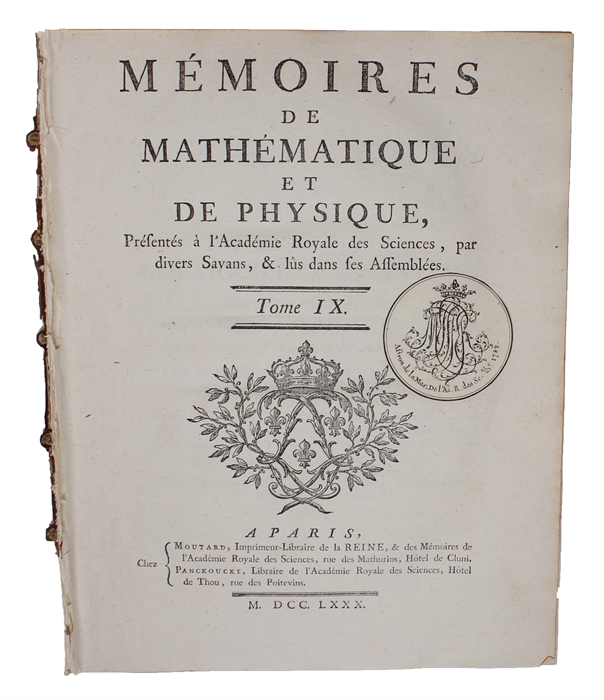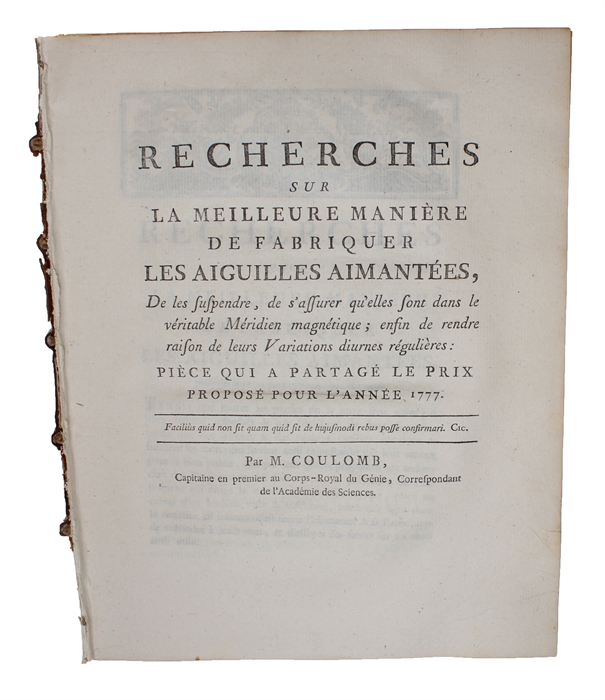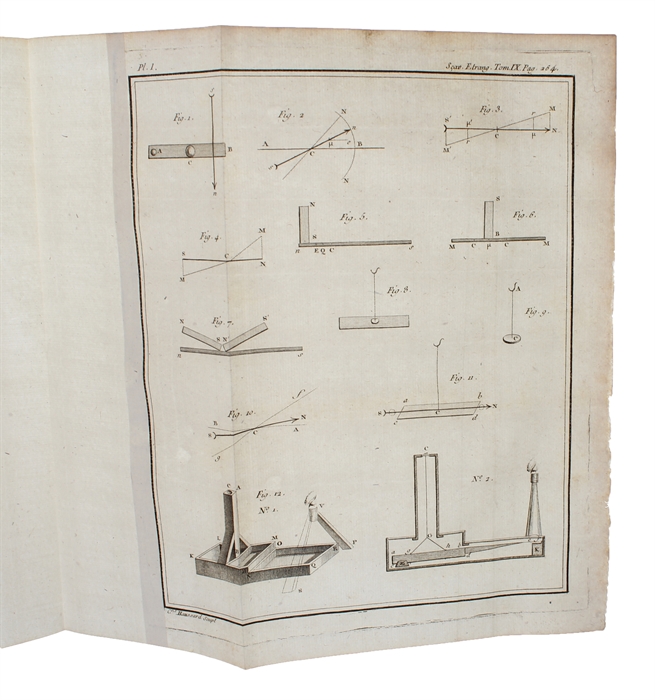THE PRIZE-WINNING PAPER ON MAGNETIC COMPASSES INTRODUCING THE TORSION BALANCE
COULOMB, (CHARLES AUGUSTIN) - THE PRIZE-WINNING PAPER ON MAGNETIC COMPASSES INTRODUCING THE TORSION BALANCE
Recherches sur la meilleure Manière de fabriquer les Aiguilles Aimantées, de les suspendre, de s'assurer qu`elles sont dans le véritable Méridian magnétique: enfin de rendre raison de leurs Variations diurnes régulières: Pièce qui a partae le Prix proposé pour L'Année 1777.
Paris, Moutard, Panckoucke, 1780.
4to. Extract from "Mémoires fe Mathematique et de Physique, Présentés à l'Academie des Sciences par divers Savans", Tome IX. With titlepage to vol. IX. Pp. (2), (167-) 264 and 4 folded engraved plates. The memoir has also its own titlepage. Fine and clean. Wide-margined.
First printing of this monumental memoir (the invention of the TORSION BALANCE) dealing with the best way to construct a magnetic compass. The paper contains the design of a torsion suspension declination compass and the demonstration that the forces of torsion is proportional to the angle of twist. Coulomb received the prize awarded by the Academy for this paper drafted by the Academy in 1777 (he shared the prize with Van Swinden). - "The importance of this memoir for Coulomb's career is that it CONTAINED ELEMENTS OF ALL HIS MAJOR PHYSICAL STUDIES: the quantitative study of magnetism, torsion and the torsion balance, friction and fluid resistance, and the germ of his theories of elasticity and magnetism."(DSB).
"Coulomb’s first writings on torsion were presented in his Academy prize-winning memoir of 1777, "Recherches sur la meilleure maniere de fabriquer les aiguilles aimantées."......... his simple, elegant solution to the problem of torsion in cylinders and his use of the torsion balance in physical applications were important to numerous physicists in succeeding years. In chapter 3, Coulomb developed the theory of torsion in thin silk and hair threads. Here he was the first to show how the torsion suspension could provide physicists with a method of accurately measuring extremely small forces. He showed that within certain angular limits, torsional oscillation consisted of simple harmonic motion. He examined the parameters relating the angle of twist to the length, diameter, and elastic properties of the torsion thread. In the range of simple harmonic oscillation Coulomb demonstrated that the force of torsion was proportional to the angle of twist. He used this principle in measuring small magnetic forces and also called attention to its use in measuring other forces, notably those of fluids in motion. Eventually he was able to measure forces of less than 9 x 10-4 dynes."
"Coulomb’s major memoirs in electricity and magnetism are his 1777 memoir on magnetic compasses, the famous series of seven electricity and magnetism memoirs read at the Academy from 1785 to 1791, and several magnetism memoirs prepared after the French Revolution. In his electrical studies Coulomb determined the quantitative force law, gave the notion of electrical mass, and studied charge leakage and the surface distribution of charge on conducting bodies. In magnetism he determined the quantitative force law, created a theory of magnetism based on molecular polarization, and introduced the idea of demagnetization (basically, that combinations of magnetic poles can "cancel" each other)."(DSB).
Parkinson "Breakthroughs": 1777:P
Order-nr.: 44921



